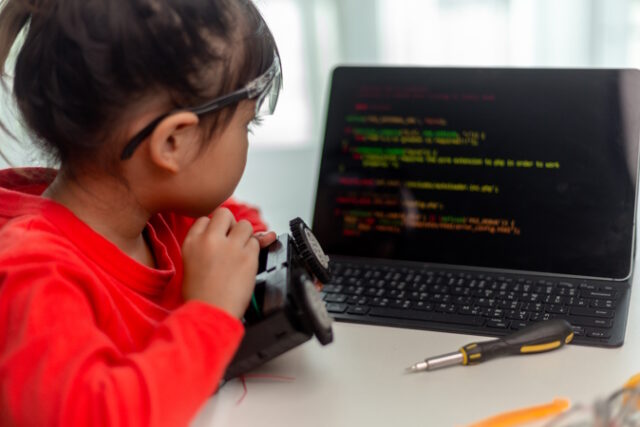
As parents and educators, there is a world of choices when it comes to teaching computer science and programming to kids. With so many resources available, it can be overwhelming to find the best programming language for kids.
One standard approach is to start by assessing your child’s skills and interests. Do they like video games? Perhaps coding Minecraft skins would be the appeal?
Once you have a better idea of what your child needs, there are a variety of free online resources available that offer tutorials, courses, and other materials that can help them get started. No matter what route you choose, it is important to remember that learning how to code takes time and practice. The key is to find something that engages your child’s interest and provides them with the support they need to continue exploring the world of computer science.
Introducing Children to the World of Coding
When introducing children to coding, it is important to choose a language that is visually appealing and easy to understand. The more accessible the language is, the easier it will be for the child to pick up and start coding. There are many programming languages that cater specifically to kids and beginners. Some of the best include:
Block-Based Languages
Block-based languages are the simplest type of programming language and are designed specifically for children and beginners. These languages allow the user to code by dragging and dropping blocks of code together, without having to worry about syntax or programming structures.
Text-Based Languages
Text-based languages are a great option for children who are ready to take the next step in their coding journey. These languages require the user to type out code, rather than using blocks. Text-based languages are perfect for kids who have a strong foundation in reading and writing, as well as an understanding of basic programming concepts.
Choosing the Right Programming Language
When selecting a programming language for your child, it is important to consider their age, ability, and interests. For younger children, a block-based language may be the best option. For older children or those with prior coding experience, a text-based language may be more appropriate.
Python
Python is a popular programming language used for everything from web development to artificial intelligence. It’s considered one of the best languages for kids to learn because it’s easy to read and understand, so it’s great for beginners.
JavaScript
JavaScript is the most popular language used on the web today and has become the de facto standard for client-side scripting in web applications. Despite being a bit more challenging than other languages, it’s still possible for kids to learn this language through online tutorials and courses specifically designed for them.
Tips for Learning to Code
Regardless of the programming language you choose for your child, it is important to provide a supportive and encouraging environment for them to learn.
Here are some tips to help your child on their coding journey:
- Start with the basics: Teach your child the fundamental concepts of coding, such as loops, variables, and conditional statements.
- Make it fun: Incorporate games and interactive activities into your child’s coding experience to keep them engaged and motivated.
- Set achievable goals: Encourage your child to set achievable goals for their coding projects, such as creating a simple game or website.
- Practice, practice, practice. The more your child practices coding, the more comfortable and confident they will become.
Skills to Serve a Lifetime
There are many programming languages that are suitable for kids to learn. From block-based languages to text-based languages, there is something for every child and every level of ability. By providing a supportive and encouraging environment, parents and educators can help children on their journey to becoming confident coders. And with all the options available, they’re sure to find the perfect language to get them started!












